Different Styles of Fabric Upholstery
A picture illustrated guide on choosing a style of fabric upholstery which fits your specific interior design or environment.

(Please ignore the bad lighting/editing or white cut-offs done on the images in this article, as the images were taken from a very old and classical book from my library)
(Links to certain terms and methods are highlighted in a different colour. Click the link and it will take you the article accordingly)
This article will only be an introduction on what's to come after this, as this article will show the styles of upholstery that can be applied to your interior decorative scheme, so that one is able to customize his surroundings to his liking.
Simple Upholstery
A loose and simple upholstery
Just as a curtain or blind can enhance a window, similarly a fabric covering will transform a chair, old or new. Unlike a fitted cover, which is securely stitched and tacked to the frame and padding of a chair. A loose cover is made from cut panels of fabric that are sewn together to form a tailored assembly, which is slipped into place on the seat.
While possessing many of the tailored qualities of a fitted cover, a loose cover is moreover, eminently practical. Since it can easily be removed for cleaning, or changed to suit your preference, whatever your requirements, decorative or practical.
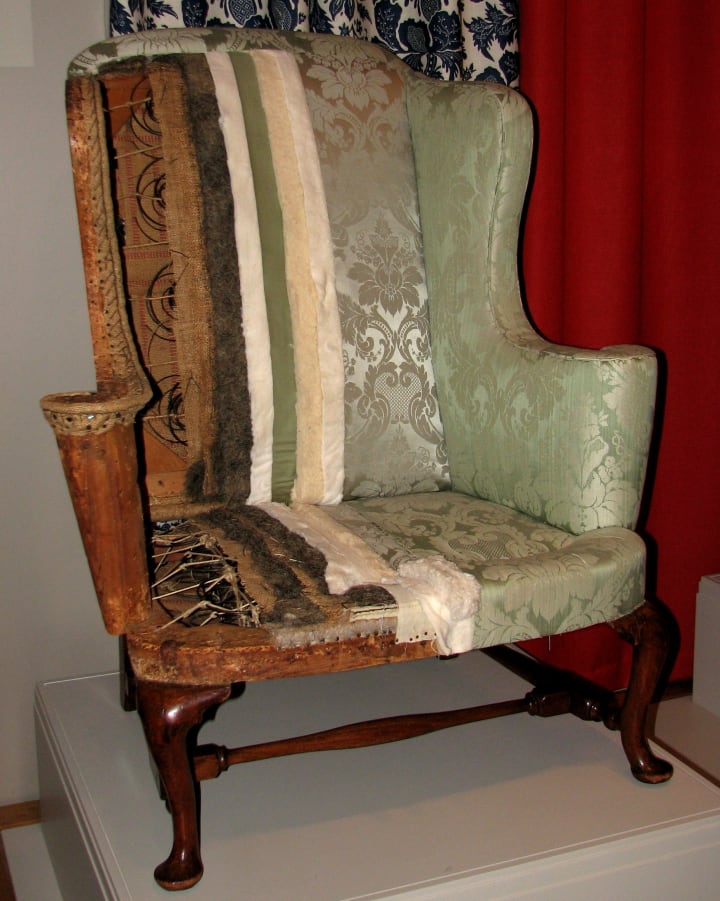
Choosing a Style
Simple fabric covers can be used to provide colour, pattern, and texture to almost any form of seating, hard or soft, upright or reclining. The most popular and effective way of benefiting from covers, however, is to use the on living-room sofas and armchairs.
A loose cover can give a new lease of life to an old, worn chair or sofa, while even the most ordinary, workaday piece of furniture can be transformed if covered with special fabric.
Choose hard-wearing fabrics that offer protection and complement the scheme of decoration by working in combination with the other fabrics and furnishings in the room.

Ethnic Textiles
It is possible to upholster an item of furniture with almost any heavyweight fabric, as long as it will stand up to the wear and tear it will receive, but the style of fabric that you choose can have a marked impact on the room.
Here, a stool has been covered with a fragment of a Turkish rug, Imparting an exotic ethnic feel to the overall decorative scheme.

Matching Fabrics
There are numerous ways of coordinating the soft furnishings within a room. Dressing to the upholstery fabric is one popular means of harmonizing a rooms decorative style. Fabric coverings can be made up in many different styles.
Here, an armchair and foot stool have been fitted with covers incorporating piped edges and flounced skirts to provide the maximum sophistication.
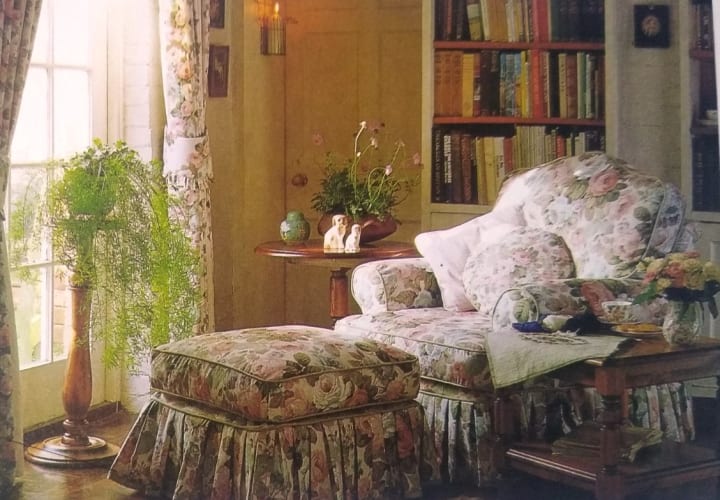
Formal and Tailored
This patterned sofa cover brightens up the traditional setting of the room, and at the same time maintains a formal tone through its tailored design. When assembling loose covers to fit sofas, you will need to join fabric widths.
If the fabric has a large pattern, always center the pattern repeat over the length of the sofa to ensure an overall visual balance.

Casual and Homely
For an instant result, blankets or rugs can be casually draped over armchairs to provide simple, stylish covers. Make sure that the fabric you use for a throw-over cover is large enough to drape well over the back of the armchair.

Modern and Linear
Loose covers can be designed to enhance the shape of furniture. These slip-over covers form a dramatic alteration in the proportions and character of a set of dining-room chairs, since they have been made up to cover not only the backs and seats of the chairs, but also the legs.

Contrasting Fabrics
Using covers made up from various different fabrics is often the most appropriate method of upholstering disparate items of furniture that do not match in size or shape. Scatter cushions placed on each piece of furniture help to link the different colours and patterns.
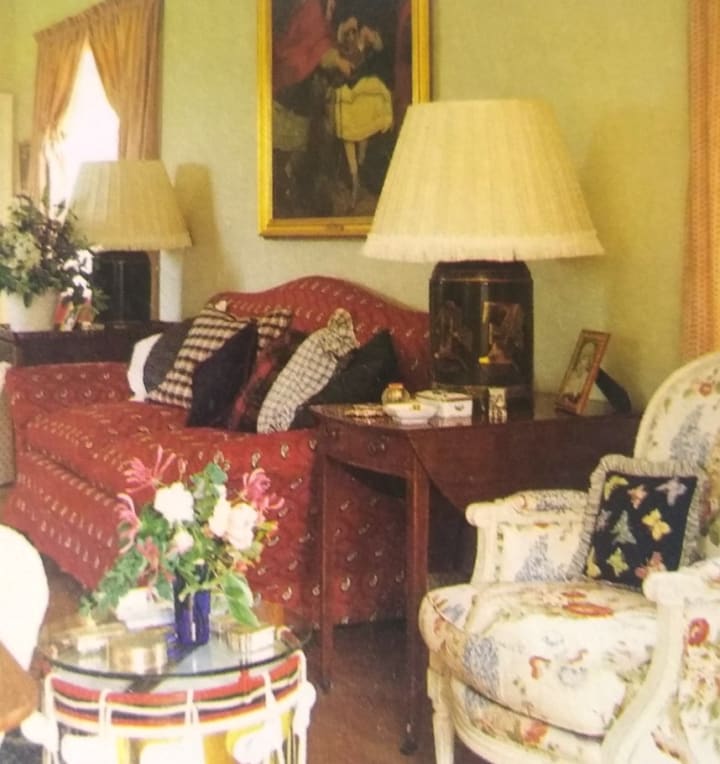
Mixing Styles
Different styles of fabric cover in complementary colours and designs can work well together then combined in the same room. Here, the single seats have fitted covers that accentuate their flowing lines, in contrast to the slip-over cover of the informal-looking sofa.
Armchairs and sofas often benefit from fabric valances. Flat or frilled valances usually conceal unsightly castors or exposed wooden legs.

About the Creator
Temoor Dar
💡Topic: Entrepreneur and Writer💡
♟️Hobbies: Traveling, Poems, Playing Chess and Solving Puzzles♟️
🎂Born: July 7, 1991🎂
📍Born in Stockholm, Sweden, and now a Londoner since 1996📍
📚Lifelong Learner📚
🌟Wisdom from Mentors🌟


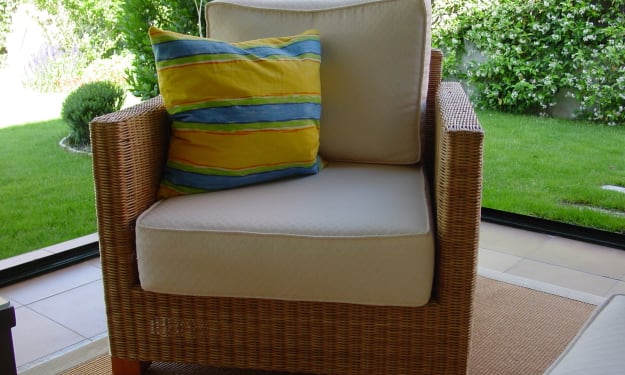

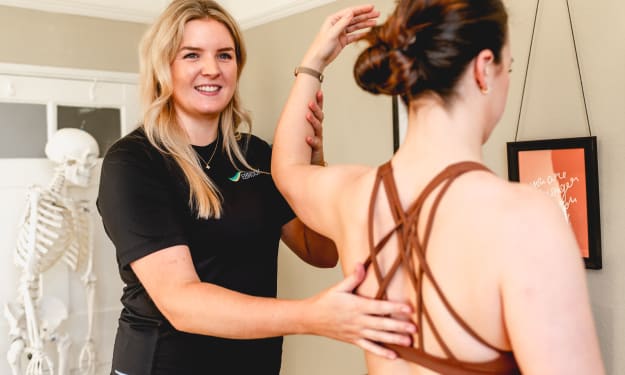

Comments
There are no comments for this story
Be the first to respond and start the conversation.